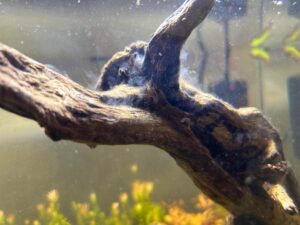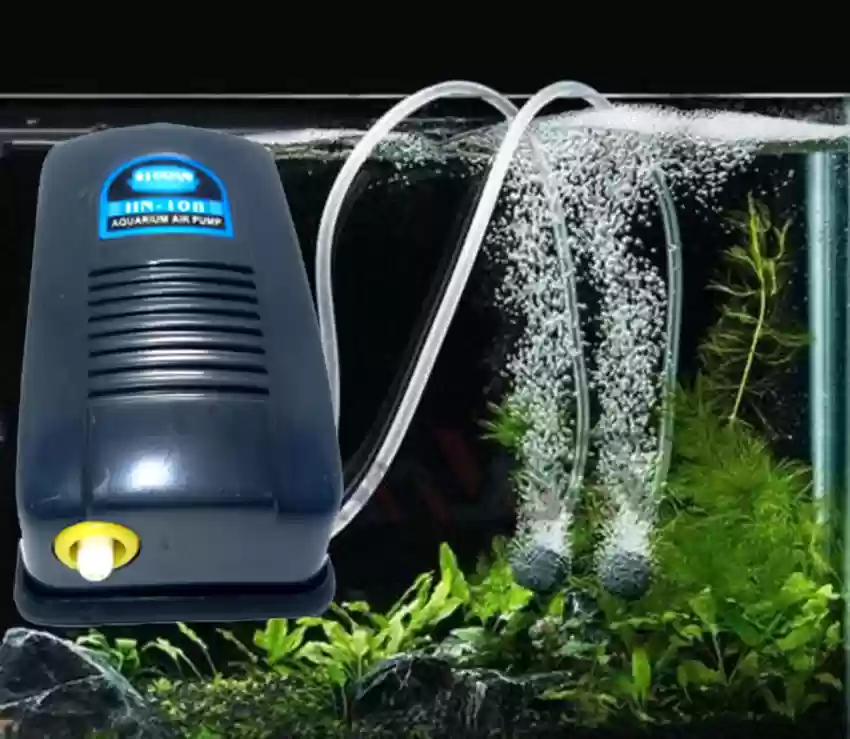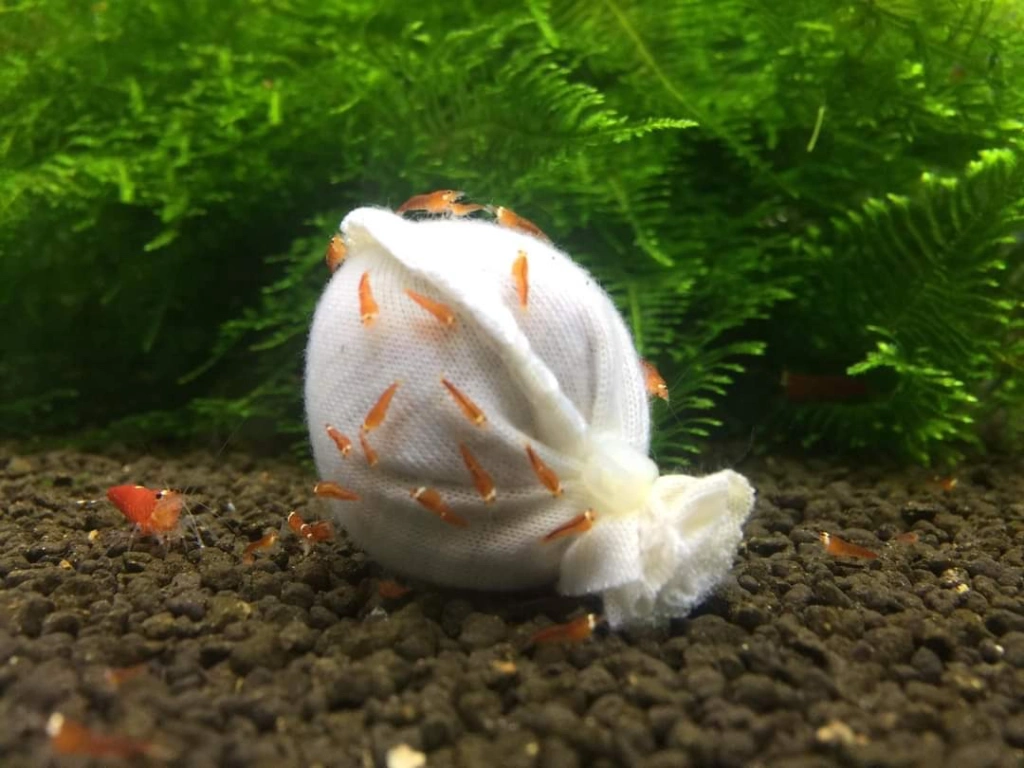Biofilm plays a crucial role in maintaining shrimp health and promoting successful reproduction in shrimp tanks. It provides a continuous, natural food source, ensuring that shrimp have the necessary nutrients for growth and breeding. A healthy biofilm presence indicates a well-balanced tank environment, contributing to shrimp longevity and vitality.
Overview of the Role of Biofilm in Natural Shrimp Habitats
In natural habitats, biofilm forms on surfaces like rocks and plants, offering a primary food source for shrimp. This microbial layer includes bacteria, algae, and fungi, creating a nutrient-rich environment similar to their native streams. Replicating this in an aquarium setting is vital for mimicking natural conditions and supporting shrimp well-being.
Biofilm is a complex aggregation of microorganisms, including bacteria, algae, and fungi, embedded in a self-produced slimy matrix known as the glycocalyx. This biofilm adheres to surfaces within the aquarium, forming a stable, nutrient-dense environment.
Significance of Biofilm as a Food Source for Shrimp and Snails

Biofilm serves as an essential food source for shrimp and snails. It is continuously available and rich in nutrients, supporting the dietary needs of these creatures. As shrimp graze on biofilm, they ingest vital microorganisms that aid in their growth and health.
The glycocalyx, or “sugar coat,” is the slimy substance surrounding biofilm microorganisms. This layer is particularly nutritious for shrimp, providing them with a steady source of energy. Consuming glycocalyx helps shrimp maintain their energy levels and supports their overall metabolic functions.
Biofilm Growth in Shrimp Tanks
Importance of Allowing Tanks to Mature After Cycling
Allowing a shrimp tank to mature post-cycling is crucial for biofilm development. During this maturation period, biofilm establishes itself on various surfaces, creating a balanced ecosystem. This period also ensures that shrimp have sufficient food sources available when introduced to the tank.
While both biofilm and algae can coexist in a tank, they are distinct entities. Biofilm is a clear, often unseen layer composed of various microorganisms, whereas algae are typically green and visible.
Effects of Surface Agitation on Biofilm Formation
Surface agitation influences biofilm formation by affecting oxygen levels and nutrient distribution. Moderate agitation can help distribute nutrients evenly, promoting healthy biofilm growth. However, excessive agitation might disrupt biofilm stability and reduce its availability as a food source. Balancing surface movement ensures optimal biofilm development while maintaining water quality.

Indicators of Too Little Biofilm
- Shrimp Behavior: Shrimp may become more aggressive in searching for food, constantly scavenging and appearing restless.
- Shrimp Health: Shrimp might show signs of malnutrition, such as slower growth rates, lower breeding success, and weakened immune systems, making them more susceptible to diseases.
- Tank Appearance: Surfaces like rocks, plants, and decorations might appear too clean and lack the slimy, natural look associated with healthy biofilm growth.
Consequences of Too Little Biofilm
- Nutritional Deficiencies: Shrimp rely on biofilm as a primary food source. A lack of biofilm means inadequate nutrition, leading to weaker shrimp with poor coloration and lower reproductive rates.
- Increased Aggression: Shrimp may compete more aggressively for limited food resources, leading to stress and possible injury.
- Decreased Survival Rates: Young shrimp (shrimplets) particularly rely on biofilm. Without it, their survival rates can drop significantly.
Indicators of Too Much Biofilm
- Water Quality: Excessive biofilm can lead to deteriorating water quality. You might notice cloudiness, unusual odors, or algae blooms due to nutrient imbalances.
- Shrimp Health: Shrimp can suffer from poor water conditions, leading to stress, increased susceptibility to diseases, and reduced oxygen levels in the tank.
- Tank Appearance: Surfaces may appear excessively covered with a slimy layer, potentially clogging filters and reducing water flow.
Consequences of Too Much Biofilm
- Water Quality Issues: Overabundant biofilm can disrupt the tank’s ecosystem. Excess organic matter can lead to ammonia spikes, increased nitrate levels, and overall poor water quality
- Reduced Oxygen Levels: Excessive biofilm can consume significant oxygen, reducing the available oxygen for shrimp and other tank inhabitants, leading to respiratory stress
- Filter Clogging: Too much biofilm can clog filters, decreasing their efficiency and requiring more frequent maintenance
- Promoting Biofilm Growth
Tips for Increasing Biofilm in Shrimp Tanks

- Feeding Practices:
- Feed a variety of foods that promote biofilm growth.
- Avoid overfeeding to maintain water quality.
- Use powdered fish food: Grinding fish flakes into a fine powder creates a protein-rich environment for microbial communities.
- Specialized Products:
- Bacter AE: This popular powder supplement introduces beneficial bacteria and nutrients to kickstart the ecosystem.
- Lubao: This natural mineral substance provides an ideal surface for biofilm growth and slowly releases beneficial minerals.
- Natural Materials:
- Add leaves (like Indian almond leaves), driftwood, or alder cones. These provide surfaces for biofilm and release beneficial compounds.
- Incorporate leaf litter, which decomposes slowly and supports biofilm growth.
- Aquascaping for Biofilm:
- Add rocks and other hardscape elements to provide more surfaces for biofilm.
- Introduce moss, which offers a large surface area for biofilm and provides shelter for shrimp.
- Ensure proper lighting and add live plants to encourage biofilm development and maintain water quality.
- Substrate and Water Management:
- Regularly maintain the substrate to promote healthy biofilm formation.
- Use aged aquarium water, mulm, or filter squeezings from established tanks to introduce beneficial microbes.
- Consistent Care:
- Maintain stable water parameters to support a healthy microbiome.
- Perform regular, small water changes to remove toxins without disrupting the established biofilm.
Risks and Challenges
Potential Risks Associated with Excessive Biofilm Growth
Excessive biofilm can lead to water quality issues, including reduced oxygen levels and increased waste accumulation, which can harm shrimp health.
Addressing Low Oxygen Levels and Suffocation Risks
Biofilm growth can deplete oxygen levels in the tank. Ensuring proper aeration and avoiding overgrowth are crucial to prevent suffocation risks for shrimp.
Measures to Prevent Biofilm from Outcompeting Beneficial Bacteria
Maintaining a balanced ecosystem is vital. Regular monitoring and adjustments help ensure that biofilm does not overshadow beneficial bacteria essential for nitrogen cycling and overall tank health. Monitor shrimp behavior and maintain a consistent schedule of testing water parameters.
Removing Excess Biofilm
Surface agitation methods: Increasing surface agitation through the use of airstones, powerheads, or water pumps can help disrupt biofilm formation by enhancing oxygen exchange and preventing stagnation.
Removal of oil from the water surface: Skimming the water surface regularly using a fine mesh net or absorbing it with a paper towel can remove oil slicks and organic debris, which contribute to biofilm buildup.
Adjusting feeding practices and water change frequency: Overfeeding can lead to excessive organic waste accumulation, fueling biofilm growth. By feeding sparingly and ensuring regular water changes, nutrient levels can be controlled, limiting biofilm development.









